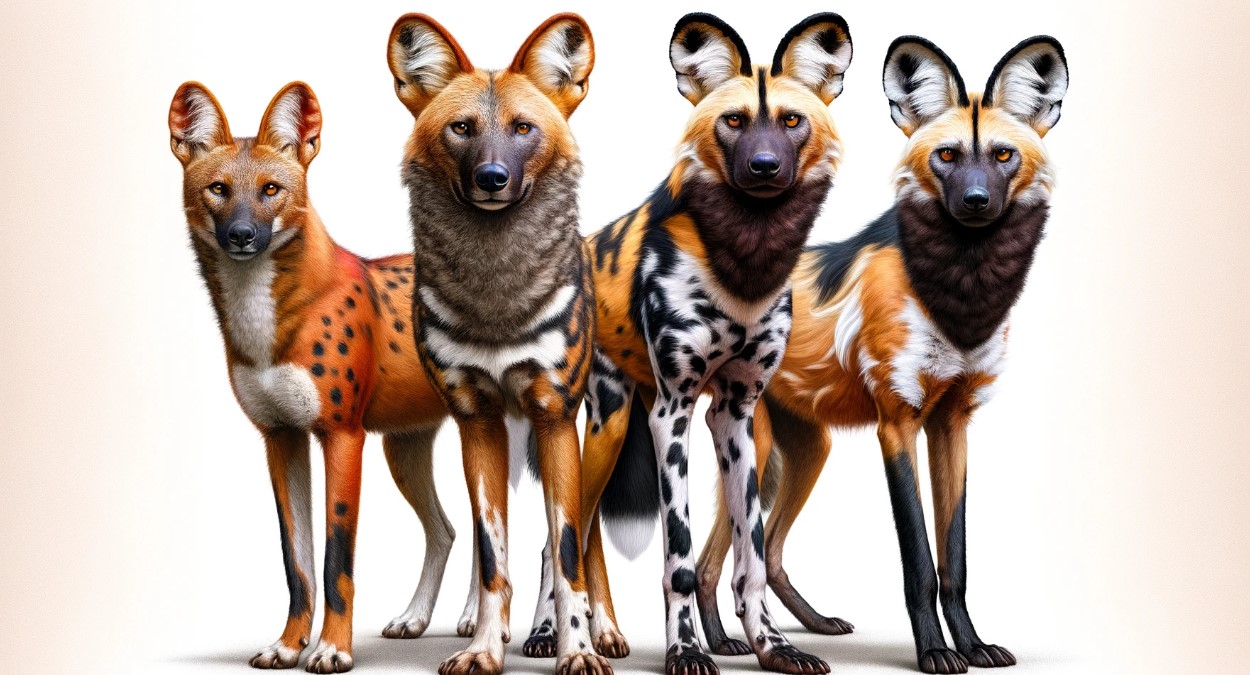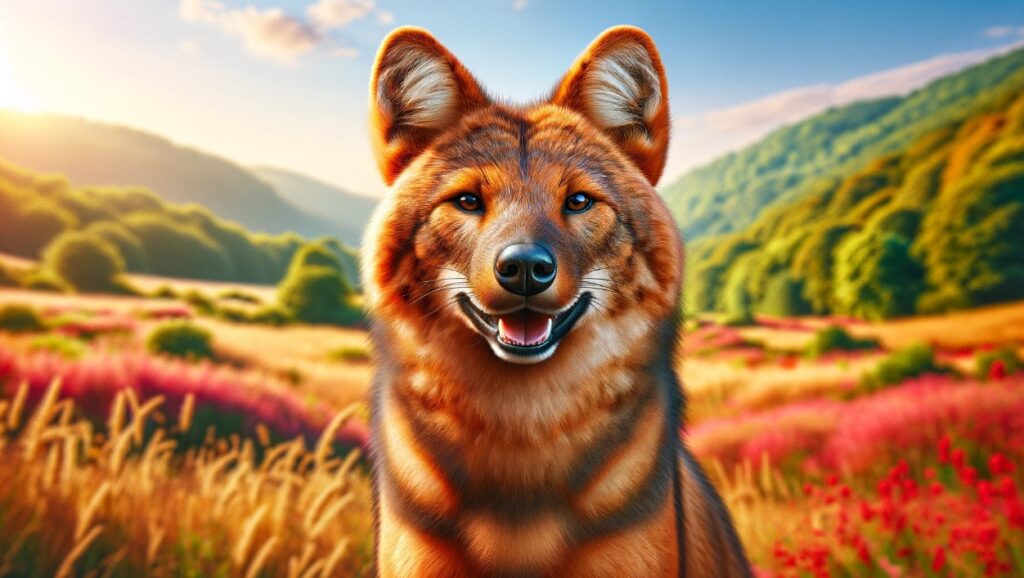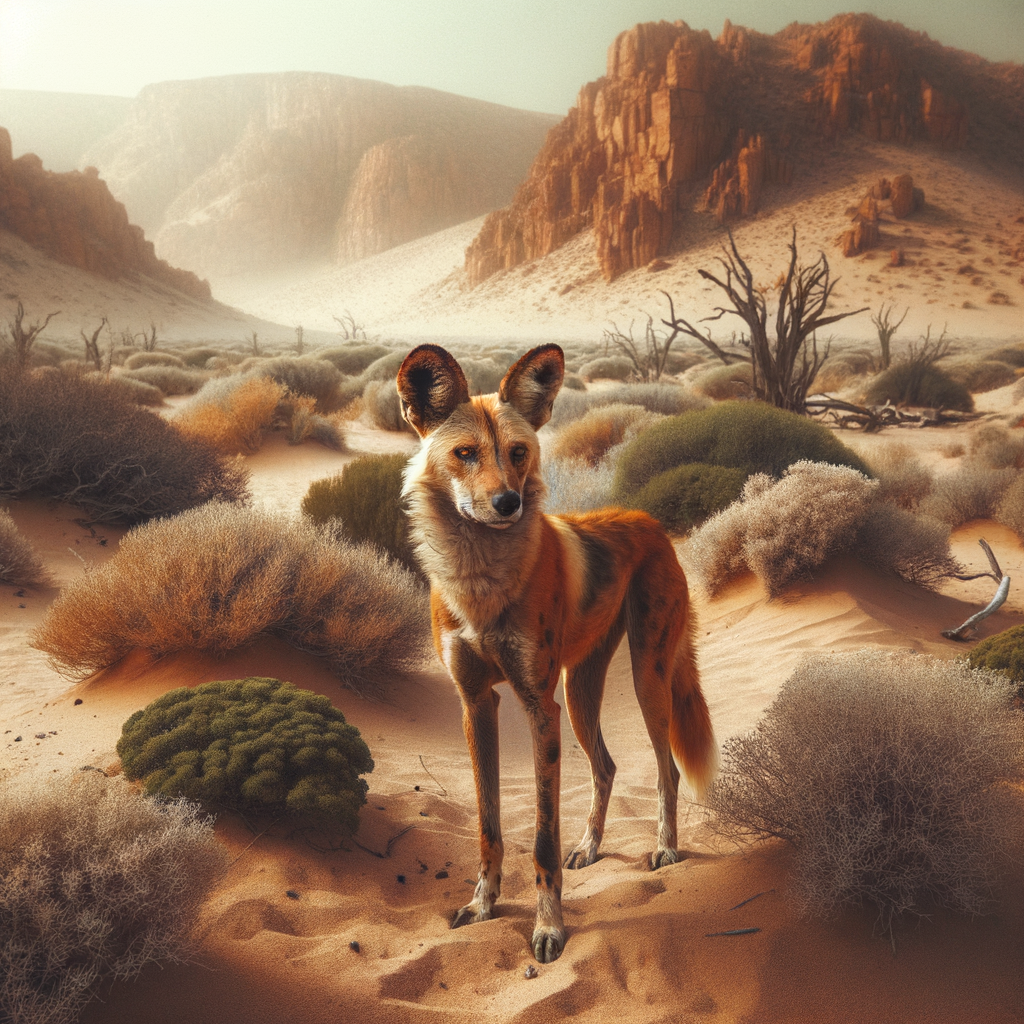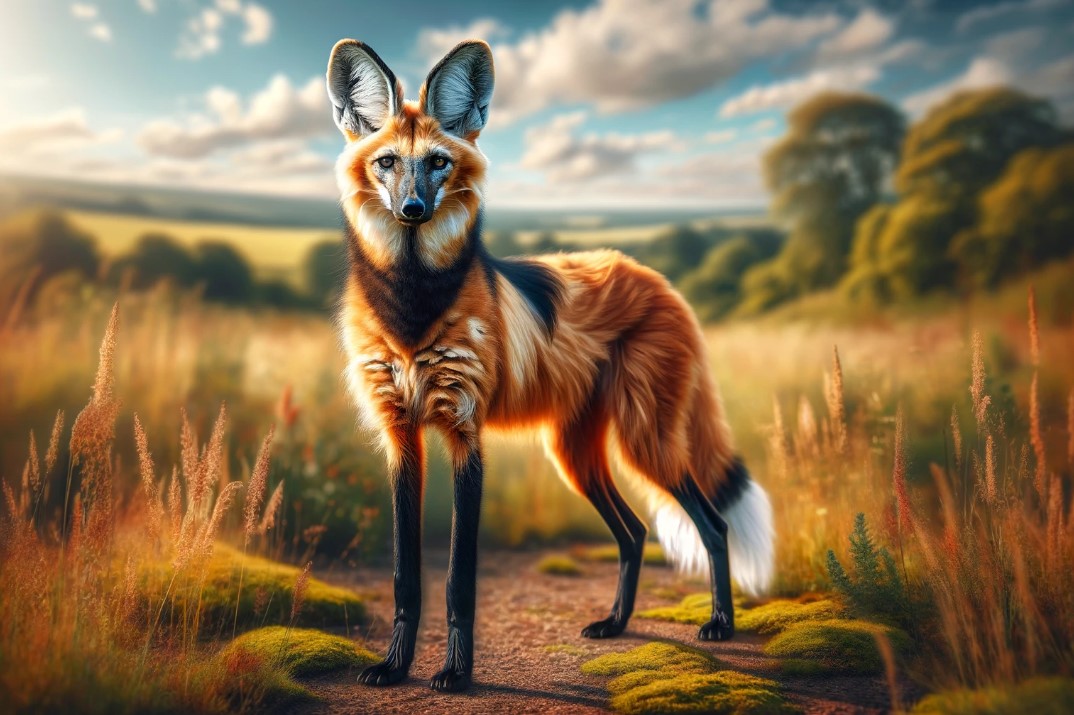When it comes to diversity among canines, wild dog breeds truly take the cake. These are the intriguing, untamed relatives of our beloved domestic dogs. They possess a rawness and a spirit that’s deeply connected with nature and their primal instincts. Just like every breed of domestic dog has its own unique story, so do these wild breeds. They have their own history, evolution, and characteristics that set them apart.

The origin of wild dog breeds is a fascinating journey, travelling back thousands of years. While many of the specifics are lost to time, genetic research and archaeological evidence provide us with an interesting glimpse into their evolution. From the wild, untamed creatures of the past, through the process of domestication, we now have the great diversity of breeds we know and love today. However, the wild breeds remain as a testament to our dogs’ ancient roots.
Wild dog breeds are not just distinguished by their lineage, but by their unique physical and behavioral traits. Their physical attributes are honed by nature, built for survival in the harsh wilderness. Behaviorally, they are typically more independent and reactive, compared to their domestic counterparts. These traits make them uniquely suited to their wild habitats, but also present challenges when they are kept in domestic settings.
Exploring the world of wild dog breeds is like opening a treasure chest of canine diversity. Each breed has its own unique traits, behaviors, and appearances that set them apart. Some wild dog breeds have even gained popularity due to their unique characteristics. But remember, while they may be fascinating and beautiful to behold, they are not typically suited for life as a pet.
Characteristics of Wild Dog Breeds
Do you ever wonder what sets your fluffy companion apart from their wild counterparts? Dive into a world beyond your backyard and explore the unique attributes that distinguish wild dog breeds!
Physical Traits of Wild Dog Breeds
Wild dog breeds are a wonder to behold, a testament to the savage beauty of nature. Let’s take a walk on the wild side and explore the physical characteristics that make these breeds stand out.
Size is one of the most distinguishing features, ranging from the African Wild Dog’s sleek, medium build, to the heftier, robust physique of the Canadian Timber Wolf. One commonality, however, is their muscular, agile bodies – a testament to their survival in the wild.
Fur color and type also varies. The Dingo of Australia sports a short, tawny coat while the Arctic Fox from the colder regions boasts a thick, white fur providing both camouflage and insulation. Their fur, often a mix of colors, serves as a form of disguise, aiding in their hunt and survival against predators.
Furthermore, wild dog breeds have stronger, sharper teeth and more powerful jaws compared to domestic dogs. They have evolved this way to tear into their prey and survive in the harsh wilderness.
Behavioral Traits of Wild Dog Breeds
Behavioral traits of wild dog breeds showcase a fascinating blend of inherent instincts and environmental adaptations. These breeds tend to be more independent, wary of humans, and naturally equipped with hunting skills.
Take the Dhole, a wild dog breed from Asia, for instance. They have remarkable cooperative hunting techniques and live in large clans, demonstrating complex social structures reminiscent of wolves.
Another wild breed, the South American Bush Dog, leads a mysterious life. They are elusive, preferring dense forests and making it a challenge for scientists to study their behavior.
The New Guinea Singing Dog, a rare wild breed, has an unusual howl resembling a melodious song. This breed showcases the variety of communication methods used in the wild.
Every wild dog breed comes with a different set of physical and behavioral traits, each shaped by their unique evolutionary journey. Understanding these characteristics not only deepens our appreciation for these breeds but also provides insights into our own domestic dogs’ ancestral roots.
Whether it’s the cooperative hunting techniques of the Dhole or the elusive nature of the Bush Dog, these wild breeds remind us of the raw, untamed beauty and complexity of nature. These characteristics make wild dog breeds a riveting subject for any dog lover or wildlife enthusiast. So keep exploring and fuel your curiosity with the world of wild canines!

Detailed Description of Each Wild Dog Breed
Let’s discover some wild dog breeds:
1. The African Wild Dog
The African Wild Dog, also known as the Painted Dog, is a highly social and intelligent canine. They are known for their unique mottled coat, which displays a mix of black, yellow, and white. They possess large, rounded ears, lean bodies, and a bushy tail.
2. The Dhole
The Dhole, or the Asiatic Wild Dog, is a unique species found primarily in Central, South, East Asia, and Southeast Asia. These dogs have reddish coats, bushy tails, and physical characteristics similar to those of foxes. They are known for their high-pitched whistles, which they use for communication.
3. The Maned Wolf
This South American native resembles a large fox more than a wolf. Its distinct red coat and ‘mane’ at the neck region make it stand out. They have very long legs, which they use to navigate through the tall grasslands of their habitat.
4. The New Guinea Singing Dog
Known for their unique vocalization, the New Guinea Singing Dogs are small, fox-like canines. They have golden coats and a distinctive head shape that resembles a dingo. They’re incredibly agile, capable of climbing and jumping with ease.
Unique Traits of Each Wild Dog Breed
Each of these wild dog breeds possesses certain unique traits that set them apart:
1. African Wild Dog
- Highly social: They live in packs and display a great deal of teamwork, especially when hunting.
- Unique coat: No two African Wild Dogs have the same coat pattern, making each one unique.
2. Dhole
- Excellent swimmers: Unlike many other canines, the Dhole is an excellent swimmer.
- Communicative: They use a complex system of vocalizations, including whistles, screams, and clucks.
3. Maned Wolf
- Omnivorous diet: While it is a canine, the Maned Wolf has a varied diet that includes both meat and plant matter.
- Solitary: Unlike most wild dogs, Maned Wolves prefer to live and hunt alone.
4. New Guinea Singing Dog
- Agile climbers: These dogs are known for their ability to climb trees, a trait not common among canines.
- Unique vocalization: Their ‘singing’ is a series of harmonic tones that are unlike any other canine.
From the exotic sounds of the New Guinea Singing Dog to the unique pack behavior of the African Wild Dog, each of these wild dog breeds has something special to offer. These untamed ancestors of our domestic dogs truly showcase the vast diversity within the canine world.
The Most Popular Wild Dog Breeds
When it comes to wild dog breeds, there are a few that stand out in popularity. These breeds are often favored for their unique physical traits and adaptable behavior.
Popularity Based on Size and Appearance
Firstly, the size and appearance of a wild dog breed can significantly influence its popularity. For instance, the Dingo, native to Australia, is a beloved creature known for its medium size and reddish-brown coat. The Dingo’s physical characteristics, similar to those of a domestic dog, make it recognizable and intriguing to many.
The African Wild Dog, also known as the African Painted Dog, is another popular breed due to its unique and vibrant coat. The combination of patches of red, black, white, brown, and yellow on its coat makes it one of the most distinctive and admired wild dog breeds.
Popularity Based on Behavior and Adaptability
Behavior and adaptability also greatly affect a wild dog breed’s popularity. The Ethiopian Wolf, for example, is highly valued for its social behavior. This breed lives in packs, showcasing a complex social structure, making it a fascinating breed for researchers and wildlife enthusiasts alike.
Another popular wild dog breed based on behavior and adaptability is the Red Fox. Known for its cunning and adaptable nature, the Red Fox can thrive in various environments, from forests to urban areas, making it one of the most adaptable wild dog breeds.
Breeding and Genetics of Wild Dogs
The breeding and genetics of these popular wild dogs further add to their appeal. For instance, the Dingo’s ability to breed with domestic dogs has led to a range of hybrid breeds, making its genetics vastly interesting to scientists and dog lovers. The African Wild Dog’s unique coat pattern is genetically determined, with each dog boasting a unique pattern, much like a human fingerprint.
Similarly, the breeding process of the Ethiopian Wolf, characterized by a dominant breeding pair and cooperative care from the pack, shows the fascinating social dynamics of this breed. The Red Fox’s ability to adapt its breeding habits to different environmental conditions exhibits its remarkable adaptability at a genetic level.
In conclusion, the popularity of wild dog breeds can be attributed to a variety of factors, including their unique physical traits, intriguing behavior, and fascinating genetics. While these breeds may not be suitable for domestic living, their presence in our world adds richness and diversity to the canine family.

Wild Dog Breeds: Exploring the Untamed Ancestors of Domestic Dogs
Breeding and Genetics of Wild Dogs
When we delve into the world of wild dog breeds, it’s impossible to overlook the significant role that genetics play. The genetic makeup of wild dogs is a fascinating subject that reveals much about their origins, characteristics, and survival strategies.
The Role of Genetics in Wild Dog Breeds
Genetics play a crucial role in the diversity and uniqueness of wild dog breeds. The genetic composition of a wild dog breed determines its physical characteristics like size, coat color, and body structure. It also influences behavioral traits such as hunting skills, social behavior, and adaptability to different environments.
For instance, the African Wild Dog, known for its unique coat patterns, owes its spectacular appearance to its genetic makeup. These patterns are not just for show; they serve as camouflage, helping the dog blend with its environment while hunting.
Genetics also play a pivotal role in the health of wild dog breeds. Certain breeds are predisposed to specific health conditions due to their genetic makeup. For instance, the Dingo, an Australian wild dog breed, is genetically predisposed to develop hip dysplasia, a common health issue in many dog breeds.
The Process of Breeding Wild Dogs
Breeding wild dogs is a complex process that requires a deep understanding of their genetics. Unlike domestic dogs, wild dogs have not been selectively bred for specific traits. Their genetic diversity is a result of natural selection, where only the fittest survive and reproduce.
In the wild, dogs breed based on a variety of factors including availability of food, territory, and the presence of a suitable mate. The alpha pair, usually the strongest and most dominant, often has exclusive breeding rights within a pack.
Breeding wild dogs in captivity, however, is a different ball game. It requires careful planning and consideration to maintain genetic diversity and prevent inbreeding, which can lead to genetic disorders. Conservation efforts often involve breeding programs that aim to increase the population of endangered wild dog breeds.
In these programs, breeders carefully select dogs based on their genetic health, behavioral traits, and compatibility. This meticulous process helps ensure the survival of these magnificent creatures for future generations to appreciate.
Understanding the genetics and breeding process of wild dogs not only helps us appreciate their uniqueness but also underscores the importance of their conservation. So, next time you look at a wild dog, remember that there’s more to them than meets the eye – a rich genetic tapestry that tells a story of survival, adaptation, and evolution.
Understanding the Behavior of Wild Dogs
Wild dog breeds can exhibit markedly different behaviors than their domestic counterparts. First, it’s crucial to remember that wild dogs are innately pack animals. This means they have a strong sense of community and hierarchy, and many of their behavioral traits are centered on these social structures. For instance, wild dogs often participate in pack hunting, which requires cooperation, tactical planning, and an acute understanding of their pack mates’ roles.
Furthermore, wild dog breeds tend to be more territorial than domesticated ones. They mark and defend their territories, and any intruders are typically met with aggression. This is not a sign of inherent viciousness but a survival instinct developed over millennia to protect resources and ensure the survival of their pack.
The communication methods of wild dogs also differ. Besides vocal communication, they use a wide array of body languages, such as ear position, tail carriage, and facial expressions, to relay information to their pack members. This body language speaks volumes in the wild, indicating everything from submission to dominance.
Tips for Training Wild Dog Breeds
Training a wild dog breed can be a daunting task, but it’s not impossible—especially if you understand their inherent behaviors. Here are some tips to guide you:
– Start Early: Younger dogs are more impressionable and adaptable. Start training as soon as you bring your dog home.
– Consistency is Key: Consistency in commands and rewards helps your dog understand what you expect from them.
– Positive Reinforcement: Always reward good behavior. This can be through treats, praises, or extra playtime. Dogs respond well to positive reinforcement.
– Patience: Remember, these are wild breeds, and they may take longer to train than a domestic breed. Don’t rush the process.
Another important tip is to consider professional help. Wild dog breeds can be a handful, and professional trainers are equipped with the necessary knowledge and skills to handle them. They can provide tailored training methods that cater to the specific needs of your dog.
Exposure and Socialization: For wild dog breeds, early exposure to different environments, people, and animals is vital. This helps them adapt and reduces aggressive behavior that can be triggered by fear or unfamiliarity.
Understanding and Respect: Understand that these breeds have inherent behaviors that may not align with typical household pet expectations. Respect their nature and find constructive ways to channel their instincts.
Remember, every dog is unique, so what works for one might not work for another. It’s all about understanding your own dog’s needs and behavior. Training wild dog breeds requires patience, understanding, and lots of love. But with time and effort, these beautiful and exotic creatures can make wonderful, loyal companions.

Common Health Issues in Wild Dog Breeds
Wild dogs, like any other living beings, are susceptible to certain health issues. The unique traits and characteristics that wild dogs possess also predispose them to specific health problems.
One common health issue that affects many wild dog breeds is hip dysplasia. This condition is common among large dogs, and symptoms include limping and difficulty in movement. If left untreated, it could lead to severe pain and disability.
Heart diseases are also common among wild dog breeds. Conditions such as heart murmurs and congestive heart failure are often seen in these canine breeds. The symptoms can range from lethargy and coughing to difficulty breathing and fainting.
Furthermore, skin diseases are quite prevalent among wild dog breeds due to their exposure to various elements in the wild. Fleas, ticks, and other parasitic infections can lead to skin irritation, hair loss, and other related conditions.
It’s also worth noting that wild dogs are prone to certain genetic disorders. These are often breed-specific and can include conditions such as progressive retinal atrophy (PRA), which leads to blindness, and degenerative myelopathy, a condition that affects the spinal cord.
Nutritional Requirements of Wild Dog Breeds
When it comes to the nutritional requirements of wild dog breeds, it’s essential to understand they differ significantly from domesticated dogs. Wild dogs typically have a diet rich in proteins and fats to cater to their active lifestyle.
Since wild dogs are often on the move, they need a high amount of energy. This energy is primarily derived from proteins. Proteins not only provide energy but also help in muscle development and repair.
Fats, on the other hand, are vital for maintaining a healthy coat and skin. They also serve as a concentrated source of energy. However, it’s important to ensure that fats are balanced with proteins and carbohydrates to prevent obesity.
Wild dogs also require a good amount of fiber in their diet. Fiber is crucial for maintaining a healthy digestive system and for the prevention of diseases such as diabetes and heart disease.
While vitamins and minerals are required in smaller quantities, they play a crucial role in the overall health and well-being of wild dogs. They aid in various bodily functions such as bone development, vision, and blood clotting.
In conclusion, taking care of the health and nutrition of wild dogs is of utmost importance. While they are resilient and adapted to harsh conditions, they still require proper care and attention to thrive. Proper understanding of their health conditions and nutritional requirements can go a long way in ensuring their well-being.
Please remember, while many of us admire the beauty and spirit of wild dog breeds, they are not suitable as pets for most people. The care and understanding of these breeds require specific knowledge and resources. Always consider adoption from shelters and rescues, as many domestic dog breeds are in desperate need of homes.
The Role of Wild Dog Breeds in Ecosystems
The Impact of Wild Dogs on Biodiversity
As an integral part of our natural ecosystems, wild dog breeds play a crucial role in maintaining biodiversity. They often act as apex predators, policing smaller carnivores and herbivores, which helps to maintain a balance in the food chain.
For instance, wild dogs like the Dhole in Asia or the African Wild Dog have a significant impact on the populations of their prey, such as deer, antelope, and rabbits. By regulating these populations, they indirectly promote the growth and diversity of plant life. This is because fewer herbivores mean less pressure on plant populations, allowing a greater variety of plant species to flourish.
The Role of Wild Dogs in Predator-Prey Dynamics
Wild dogs play a significant part in predator-prey dynamics. They are skilled hunters, often cooperating in packs to take down larger prey. This hunting behavior encourages the evolution of speed, agility, and alertness in their prey, leading to a healthier, more robust ecosystem.
For instance, the Gray Wolf, a wild breed native to North America and Eurasia, has been observed to influence the behavior and distribution of their prey. Their presence can cause prey species like elk to avoid certain areas, which can lead to shifts in plant life in those regions.
Final Thoughts
As we explore the world of wild dog breeds, it’s fascinating to observe how these untamed relatives of our domestic dogs interact with their natural environments. Their impact stretches far beyond their immediate prey, reverberating throughout their ecosystems and shaping the world around them.
As dog parents, we often marvel at the domestic dogs’ hunting instincts, their pack behaviors, or their sharp survival skills. While we see only a muted version of these traits in our homes, the wild versions of these behaviors are alive and well in the wild dog breeds.
By understanding the roles of these wild dogs in their ecosystems, we not only gain insight into the survival skills and genetic traits that our domestic dogs may have inherited but also appreciate the delicate balances that exist in nature and the value of biodiversity.
Next time you watch your dog chase a squirrel or howl at the moon, remember their wild ancestors’ critical roles in the ecosystems. They are not just remnants of their wild past but a testament to the intricate dynamics of life on Earth. It’s a beautiful reminder of why we need to work towards preserving these natural habitats and their wild inhabitants.
Every creature, including our beloved wild dog breeds, has a role to play in this grand theater of life. Let’s ensure that they always have a stage to perform on.
Frequently Asked Questions
Q1: What are some examples of wild dog breeds?
A: Some examples of wild dog breeds include the Dingo, New Guinea Singing Dog, and the African Wild Dog.
Q2: How are wild dog breeds different from domesticated dogs?
A: Wild dog breeds are not bred for specific physical and behavioral traits like domesticated dogs. They are more independent, have stronger hunting instincts, and are generally not suitable as pets.
Q3: Can wild dog breeds be domesticated?
A: While some wild dog breeds have been domesticated in the past, it is generally not recommended. These dogs have evolved to live in the wild and may not adapt well to a domestic environment.
Q4: What is the largest wild dog breed?
A: The largest wild dog breed is the Irish Wolfhound, which can reach heights of up to 34 inches at the shoulder and weigh up to 180 pounds.
Q5: Are wild dog breeds dangerous?
A: Wild dog breeds can be dangerous if they feel threatened or if they are not properly socialized. However, they are generally not aggressive towards humans unless provoked.
Dr. Candy, a holistic veterinarian and certified raw dog food nutrition specialist, graduated from Oklahoma State University in 2009 with a DVM and has since specialized in companion animal nutrition, advocating for species-specific diets. With a background in wildlife rehabilitation and oil spill response, she combines holistic health and conventional medicine in her unique approach to treating chronic diseases, allergies, and autoimmune conditions in pets. As the owner of a veterinary practice in Colorado and an author, Dr. Candy is dedicated to educating pet parents and improving the health and happiness of animals.




